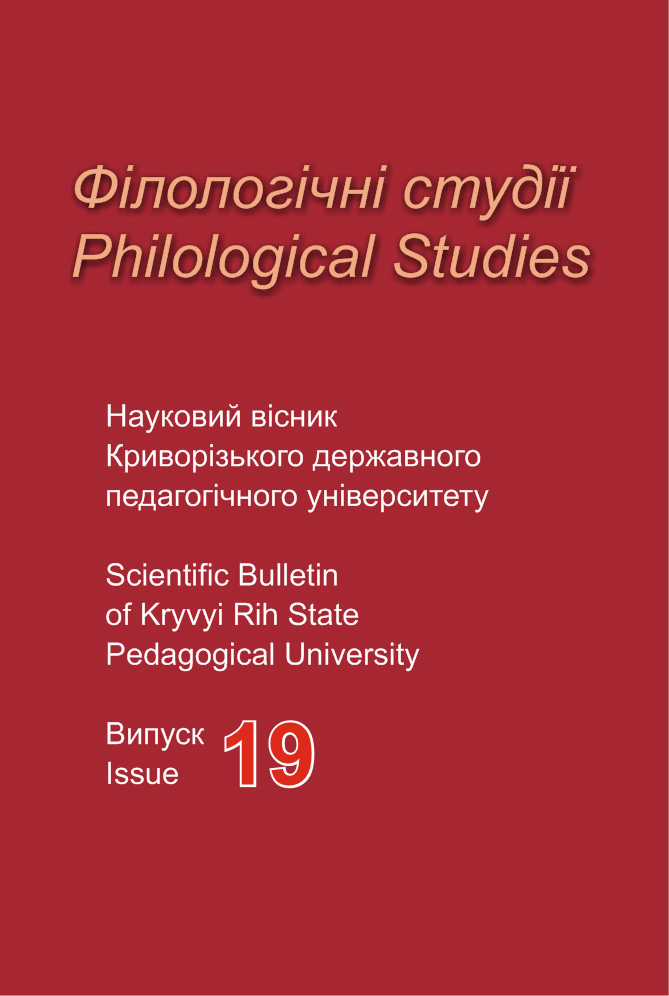Somatic idioms describing traits of character in teaching English
DOI:
https://doi.org/10.31812/filstd.v19i0.2320Keywords:
phraseological unit, somatic component, foreign languageAbstract
The change of general scientific paradigm to the anthropological stream activates the interest of specialists in different areas to investigate the human-oriented problems, especially in linguistics and phraseology. Outlining previous research it should be mentioned that different aspects of somatic phraseologisms are investigated in the works of I. Denysenko, V. Hmara, G. Kozorih, Yu. Lapuhina, L. Moiseienko, N. Skorobagatko, F. Vakk and others. However these studies do not cover all the peculiarities of somatic idioms and their usage in teaching foreign languages. This article makes the attempt to represent the importance of involving the knowledge of idiomatic expressions in teaching foreign languages, in particular on the basis of somatic idioms. The main tasks of this research include analyzing the structure and semantics of phraseologisms with somatic components, comparing them with their native language equivalents and implementing these samples into the process of teaching foreign languages, English in particular.
The analysis has shown that both languages manifest a great variety of samples containing somatic nominative components such as “eyes”, “ears”, “lips”, “nose”, “mouth”, “heart”, “tongue”, “blood”. Additionally it has been stated that revealing human traits of character these phraseologisms represent certain variations in their meaning as well as their structure. We have also concluded that such idioms can be a well designed material for illustrating stylistic differences and peculiarities in both languages. For our further studies we leave the issues outlining the peculiarities of English and Ukrainian phraseologisms defying traits of character containing nominative animistic elements.
Metrics
References
Жайворонок В.В. Знаки української етнокультури: словник-довідник.Київ : Довіра, 2006.703с.
Мойсеєнко Л. Соматизми в українській, німецькій та польській мовах із компонентом найменування “частина тіла людини”. Київські полоністичні студії.2015. Т. XXVI. C.410–415.
Патен І. Соматичний компонент у складі фразеологічних одиниць зі значенням переміщення у просторі (на матеріалі української, польської та англійської мов). Проблеми гуманітарних наук. Серія “Філологія”. 2015. Вип.36. C.88–96.
Словник фразеологізмів української мови/ уклад.В.М.Білоноженко таін.Київ : Наук. думка, 2003. 1104с.
Українські прислів’я і приказки/ уклад. М.Номис.Київ :Либідь, 1993. 768с.
Oxford Dictionary of Idioms/ ed. J.Siefring. New York: Oxford Univerity Press, 2004. 340p.






